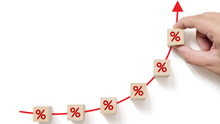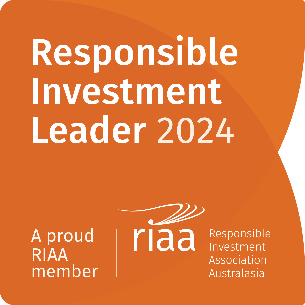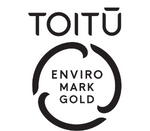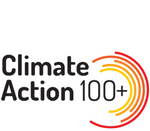The Ides of March come to pass

This month’s interest piece has been written by Devon’s Head of Retail, Greg Smith.
For investors, March 2022 will very much go down as a milestone month in more ways than one. The world passed the official two-year anniversary of the pandemic, the Fed signalled the first rate lift off since 2018 and the war in the Ukraine went past the month mark, with no clear end in sight.
If that wasn’t all, commodity prices soared, with oil going above US$130 a barrel to reach a 14-year high. Meanwhile the bond yield curve inverted (the US 5-year Treasury yield briefly went above the 30-year yield for the first time since 2016) with some suggesting that fixed interest markets are now signalling that a recession is on its way. Given all this, equity markets delivered a somewhat stoic performance. The S&P500 in the US gained nearly 4%, the ASX200 rallied more than 6% and the NZX50 ticked up 1% (despite a double-digit percentage fall in Fisher & Paykel Healthcare, one of New Zealand's largest companies).
The fate of a certain Julius Caesar has led to the phrase ‘Beware the ides of March’ and investors certainly had every reason to be cautious last month. But there was certainly no replay of what was seen two years ago at the onset of the pandemic. What gives?
No one knows how the war in the Ukraine will play out. What is clear is that from a military perspective, Russia has vastly miscalculated how easy the battle would be. Ceasefire negotiations are an ‘evolving’ situation, and any breakthrough would likely drive a snap back higher in the indices which have already recovered materially from the lows of a few weeks ago (the NZX50 was 3% higher by the end of March). This has been consistent with previous global conflicts, where a market rebound has occurred after an initial downward lurch.
From the market’s perspective, the main fallout from the invasion has been an initial parabolic surge in commodity prices. This has benefitted resource-centric markets such as Australia. After an initial dip, the market has rallied, with the ASX200 up 7% at the end of March relative to invasion day. Resource bellwethers have been led by BHP, which surged around 17% to the end of March.
While some have chosen to de-risk resource exposure, the Devon investment team have stayed the course, and done very well on BHP (along with other names) with the stock held across most of the Devon funds.
The Ukrainian conflict has compounded the challenge of inflation. Commodities have surged following the start of war in the Ukraine, and this has driven a surge in prices amid concerns over the access to key commodities where supplies were already tight. These concerns are legitimate, particularly for the likes of aluminium, palladium and nickel, where Russia is estimated to account for around 25%, 40% and nearly 50% of global supplies respectively.
Prices for wheat (Russia is the world’s largest producer) surged as did the likes of corn. Russia and Ukraine together supply more than 25% of the world’s wheat, and nearly 20% of corn exports (along with 80% of sunflower oil). This has caused soft commodities to march higher, with obvious implications for food prices.
The energy complex has also been on the rise, as Russia accounts for 10% of global oil supplies and around one third of Europe’s gas.
These moves in commodity prices have exacerbated what were already high price levels being experienced by a world economy coming out of the pandemic. However, on the other side, the greatest miscalculation of all by Vladimir Putin may have been the world’s ability to “find a way” to do without much of what Russia supplies for “as long as needed.”
This includes energy. Oil prices have fallen more from 20% from their initial invasion highs, with US crude back below US$100 a barrel. The US has announced plans to release one million barrels of oil per day from the US strategic petroleum reserve (the 180 million barrels being drawn is the largest in history) for around six months. US allies are expected to release 30 million to 50 million more barrels of oil from their own reserves. OPEC+ have also agreed to raise output targets by 432,000 barrels per day from 1 May. Oil and gas, along with other commodities such as wheat, have effectively been weaponised by Russia during the war, but their force is being blunted.

Source: Tradingview
Any notion of indispensability appears to be evaporating. An example is in gas where it was likely assumed that Europe (which bought 27% of Russia’s energy exports last year) would continue to buy energy whatever the situation. The 1,234km Nord Stream 2 gas pipeline was completed at a cost of US$11 billion and was designed to double the flow of gas between Russia and Germany. The pipeline now sits unused and abandoned. The IEA has put together a 10-point plan which could reduce Europe’s reliance on gas by a third over the next year (including the supply of gas from other sources, and an accelerated deployment of solar and wind).
Europe being in a position to turn away Russian energy could be the final straw for an economy which is already cratering. The Institute of International Finance (IIF) has estimated that the Russian economy will contract 15% this year, and a further 3% in 2023 – wiping out 15 years of growth. This is as nations across the world bind together with additional economic sanctions.
The corporate backlash has also been intense. Thus far over 400 multinationals have abandoned, divested or suspended operations in the country. The ‘Great Business Retreat’ is a thing and will have prolonged consequences for Russia as investment is withdrawn and hundreds of thousands of jobs are lost (McDonald’s alone employs over 60,000 people in the country).
This while (despite what the bond market may be saying with an inverted yield curve) most other economies are in a good space and are navigating higher interest rates. The global economy is expected to grow strongly at around 3-4% in 2022, even after allowing for the substantial price shocks emanating from the conflict in the Ukraine.
Major economies are recovering well out of the pandemic. The US economy added 431,000 jobs in March, taking the unemployment rate to 3.6%, the lowest level in more than 50 years. Down under, Australia’s unemployment has fallen to 4%, the lowest since the GFC. Both the US and Australian economies are growing strongly. In New Zealand our unemployment rate has hit a record low 3.2%, and our tourist economy is set to get a further boost as we join the rest of the world on a reopening path. Russia will barely cause an export blip, being 25th on our list of trading partners.

Source: OECD
The economic enemy though is inflation which is at multi-decade highs, and this have been worsened by the impacts of war. In response to this governments including our own have lent a near term helping hand to consumers (who have a large say in economic growth) with lower fuel taxes and other similar measures.
Yes, interest rates are going to rise, with the likes of the Fed and RBNZ potentially set to raise rates another six times this year. The RBNZ, which raised the OCR at the last meeting, did declare it wanted to maintain some ‘optionality’ and could move less or more quickly as needed. Given the last meeting was two days before the invasion, it will be interesting to see what officials have to say on the matter in two weeks’ time.
The fight against inflation is inextricably linked to (successful) outcomes from the pandemic, but there also remains the prospect that some pandemic-induced inflationary pressures will also start to moderate as supply chains open up. Whilst we may not be at that point yet across the board, some large corporates (e.g. Apple) have already suggested that this process is underway.
An environment where interest rates are rising is new territory for investors after an era of ultra-low interest rates. But there is also cause to believe that the broader markets can successfully acclimatise to the ascent in interest rates (with a notable exception being Russia where the key rate has doubled to 20%).
A tightening of rates following the trauma of the pandemic, and the stimulus administered as a result, is a vote of confidence in a rebounding economy. Rate rises per se are also not necessarily something to be feared by equity investors, which we can see by looking back at the most recent previous tightening initiatives, when equity markets performed strongly. Between June 2004 and June 2006, the Fed raised rates 17 times and the S&P 500 rose more than 10% over the period. The key benchmark rallied more than 40% during the 2015-2018 tightening cycle.
There is no question that interest rates will need to rise, particularly given that they are in sharply negative real terms when adjusting for inflation. Real interest rates in the US are a negative -7%. There could be a long period of adjustment, and given recent commodity prices moves, comparisons have been drawn to the 1970’s when a supply driven shock was only tamed as central banks raised interest rates sharply. The US Fed Chair at the time, Paul Volcker, ultimately imposed a ‘real’ Fed Funds Rate of 5% to get inflation finally under control.

Source: Gavekal Research
This time around there are similarities, but also stark differences. The world is already getting on and finding other ways to address the Russia supply shock. The are signs that the pandemic-driven supply shock will ease as the world opens up. Despite ‘full’ employment, wage growth has generally been relatively benign, with the world largely less unionised than five decades ago.
Inflation may not be as intense (or as persistent) as many are warning, making the central bank fight against inflation a less harrowing road than some forecasts. Indeed, many old economy stocks and sectors that are tied to the economic cycle could thrive in such an environment.
In the ‘good fight’ against inflation there will still likely be stock market ‘casualties,’ not least of which are likely to be high-priced growth stocks, with cash flows weighted towards periods far into the future. The Great Rotation from value to growth was covered in January’s Special Interest piece (click here), in which we outlined the substantial scope for a significant and sustained re-rating as the ‘value’ gap closes, but also as ‘expensive’ stocks fall further out of favour with global interest rates rising. This rotation could persist for many years if history is any guide.
Value investing went through a historic period of underperformance following the GFC as the world became awash with ‘free money.’ As inflation emerges and interest rates rise, the value of free cashflow generation is again being recognised. This is while many growth stocks are still extremely overvalued. Stocks have been priced by a new legion of investors and young fund managers, many of whom haven’t seen a cycle. There is a long way to go in this cycle and the journey won’t be smooth, but your risks are likely to be much lower with strong businesses that produce cashflow and are sensibly valued.
The extent to which growth stocks have already fallen out of favour is encapsulated by the graph below showing the performance of US technology IPOs or direct listings during 2021. Of the 59 tech IPOs in US during calendar 2021, 58 are below their listing price, with the median down 63%. After an IPO frenzy and dot-com style valuations during the early stages of the pandemic, the party is winding down quickly for most early-stage US tech names which have been trading on sky-high valuations. The median revenue multiple of the fifty-nine companies at listing was an eye-watering 17x revenue – it is now 5x revenue. Back to earth!
Source: Clare Capital
Meanwhile value is coming more and more into vogue, which has helped to underpin a strong performance for the Devon investment funds, and highlights the benefits of an active, value-driven investment style. Return figures from Morningstar to 31 March have all the Devon funds in the top industry quartile (for the funds covered by Morningstar) over a three month period, and most within the top industry quartile over six and twelve month periods. The Devon Dividend Yield Fund is ranked the top Australasian equity fund over the three month period to 31 March for the funds covered by Morningstar.
The prospect for ongoing (but measured) rate rises against the backdrop of a global economy that is still growing continues to provide support for our scenario of an ongoing style rotation from growth to value. This will mean that companies with higher valuations will face a much sterner test.
The investor exuberance in the likes of the tech sector has brought back memories of the dot-com era, one which ultimately saw the bubble burst. Predicting how long the war will last in Russia is difficult, but supply side shocks could well ease to a certain degree, leaving a fairer “good” fight against the much more rational forces of inflation, inspired by the pandemic.





